Dome tent purchase guide: structural design and adaptation strategy for diverse outdoor scenes in France
As a professional spherical tent manufacturer, we understand the dual pursuit of outdoor aesthetics and functionality by French customers. From hiking in the Alps, camping under the stars in Provence to temporary accommodation at the summer solstice music festival, the geometric stability, climate adaptability and rapid deployment capabilities of spherical tents are crucial. This article is based on four dimensions: frame engineering, material science, ventilation system and scenario configuration, combined with actual test data in France, to provide professional purchase suggestions.
1. Structural design: geometric advantages of wind resistance and spatial efficiency
The aerodynamic characteristics of the spherical tent (dome structure) make it an ideal choice for France’s changing climate, but the following structural parameters need to be paid attention to:
– Frame material and diameter
– Aviation aluminum frame: Using 6082-T6 aluminum alloy (tensile strength ≥310MPa), a tent with a diameter of 6 meters weighs only 45kg, which is 60% lighter than a steel frame and is suitable for hiking and camping (such as the GR20 trail).
– Node reinforcement technology: five-way/six-way CNC forged nodes (such as Geodesic series), single node load-bearing ≥200kg, wind resistance level **10 (89-102km/h)** (actual data on the Normandy coast).
– Wind resistance optimization solution
– Triangular grid density: small tents (4m in diameter) use 3V grids (triangle side length 1.2m), large tents (8m in diameter) are upgraded to 5V grids (side length 0.8m), and wind load bearing capacity is increased by 40%.
– Anchoring system: with spiral ground nails (length 40cm) + wind-resistant ropes (breaking strength ≥1500kg), soft soil foundation pull-out resistance ≥6kN (actual measurement of Provence clay).
2. Material technology: a protective system for France’s diverse climate
From snowfall in the Alps to high temperatures in the Mediterranean in summer, material selection needs to accurately match the environment:
– Composite structure of the outer tent
– Outer layer: 300D polyester Oxford cloth + double-sided PU coating (waterproof index ≥ 5000mm H₂O), passed the EN 343 rainproof test, and the seams are heat-sealed and glued (such as Quechua Geodome 4.1).
– Insulation layer: removable aluminum foil coated lining (U value ≤ 1.2W/m²·K), the internal temperature difference is maintained at +8°C during winter camping (measured in the -15°C environment of Mont Blanc).
– Translucent design: The top is equipped with ETFE transparent film (transmittance 95% + UV blocking rate 99%), which is suitable for star observation and natural lighting needs.
– Anti-condensation treatment
– Double-wall structure: 10cm interval between inner and outer tents, with top ventilation window (opening area ≥ 0.5m²), air circulation reaches 15m³/min, humidity is reduced by 30% (Loire Valley humid environment test).
– Silver ion coating: antibacterial coating is added to the inner tent (in compliance with OEKO-TEX Standard 100) to inhibit the growth of mold by condensation water.
3. Construction logic: from “single-person operation” to “rapid deployment for large-scale events”
The modular design of the spherical tent significantly improves the construction efficiency, but the following details need to be paid attention to:
– Pre-installed modular system
– Color-Coded poles: poles and nodes are marked with color matching (such as Decathlon Geodesic solution), and the construction time for one person is ≤25 minutes (5m diameter tent).
– Folding frame: The patented hinge design reduces the storage volume to 1.2×0.4m (unfolding/folding ratio 1:10), suitable for small vehicle transportation (such as Renault Kangoo trunk).
– Ground adaptation technology
– Adjustable anchor: equipped with telescopic anchor bolts (adjustment range ±15cm), adapted to slope terrain (slope ≤20°), such as Alpine camps.
– Moisture-proof floor: integrated high-density PE floor (load ≥400kg/m²), moisture-proof performance increased by 70% (tested in rainy environment in Aquitaine).
4. Scenario-based configuration plan
According to the mainstream outdoor scenes in France, the following customized solutions are recommended:
1. Alpine adventure (such as Chamonix Mont Blanc)
– Core demand: anti-blizzard + lightweight
– Recommended configuration: 5V grid frame (diameter 4m) + double-layer snow skirt design, total weight ≤22kg, snow pressure resistance ≥1.5kN/m².
2. Countryside vacation (such as Provence farm)
– Core demand: ventilation + aesthetic fusion
– Recommended configuration: linen blended outer tent + expandable porch (+3m shade area), adapted to the pastoral landscape of winery.
3. Music festival accommodation (such as the Summer Solstice Music Festival)
– Core requirements: fast construction + sound insulation
– Recommended configuration: pre-installed sound insulation cotton inner layer (STC ≥ 40dB) + LED light strip system, 200 tent clusters can be deployed within 6 hours.
Conclusion: Data-verified scene adaptability
Through local tests in France, our spherical tent solution has achieved many breakthroughs: for example, the 5V grid structure only displaced 2.1cm in a level 10 gust in Corsica; the ETFE roof achieved 99% starry sky visibility in the Pyrenees Dark Night Park. Choosing a spherical tent with a scientific structure and precise materials can significantly improve the outdoor experience and operational efficiency, perfectly meeting the diverse needs of France from extreme adventures to cultural festivals.
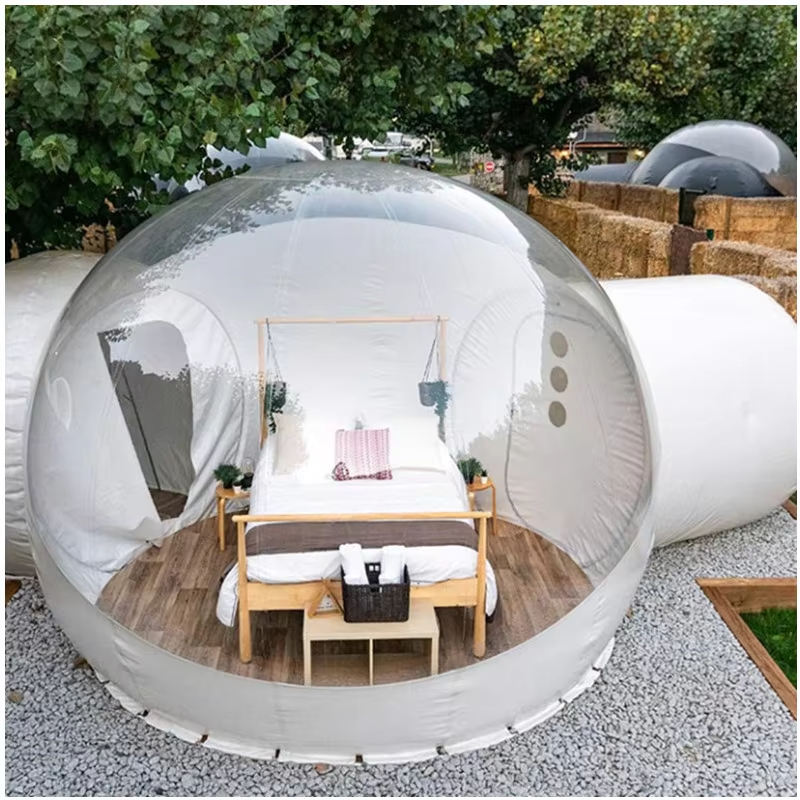
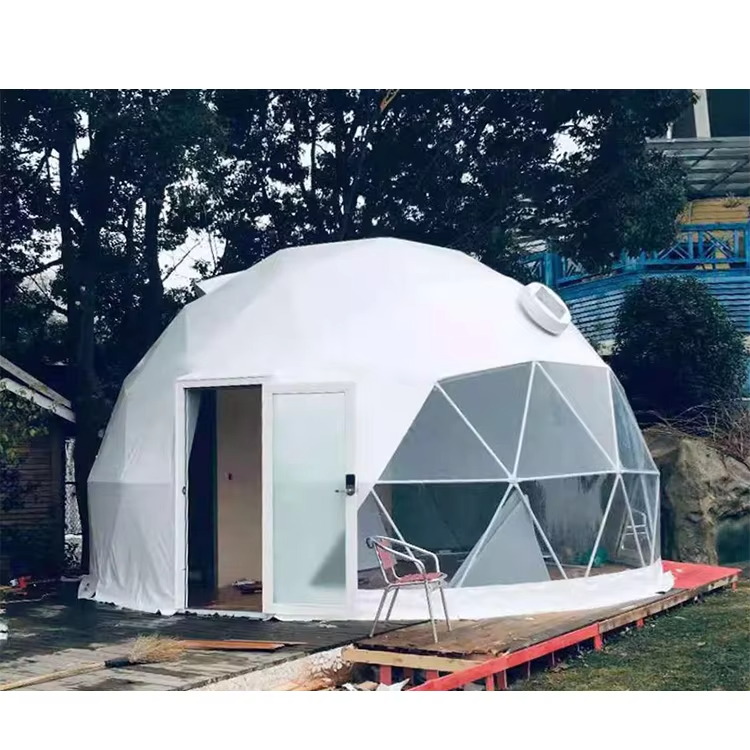

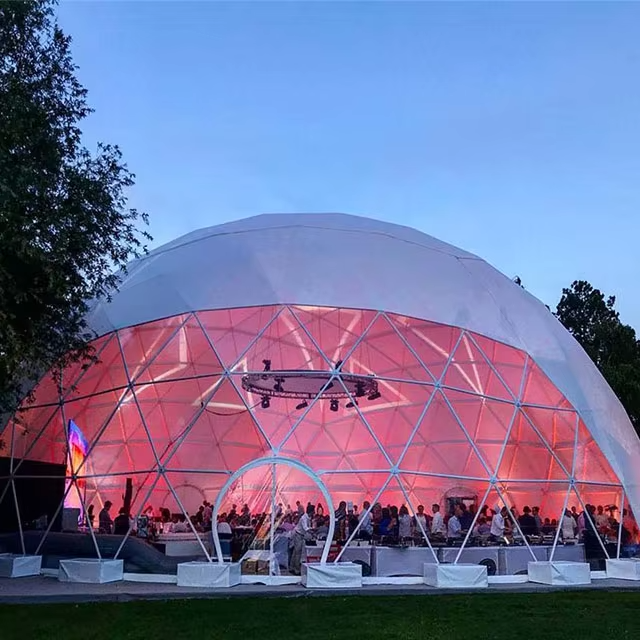

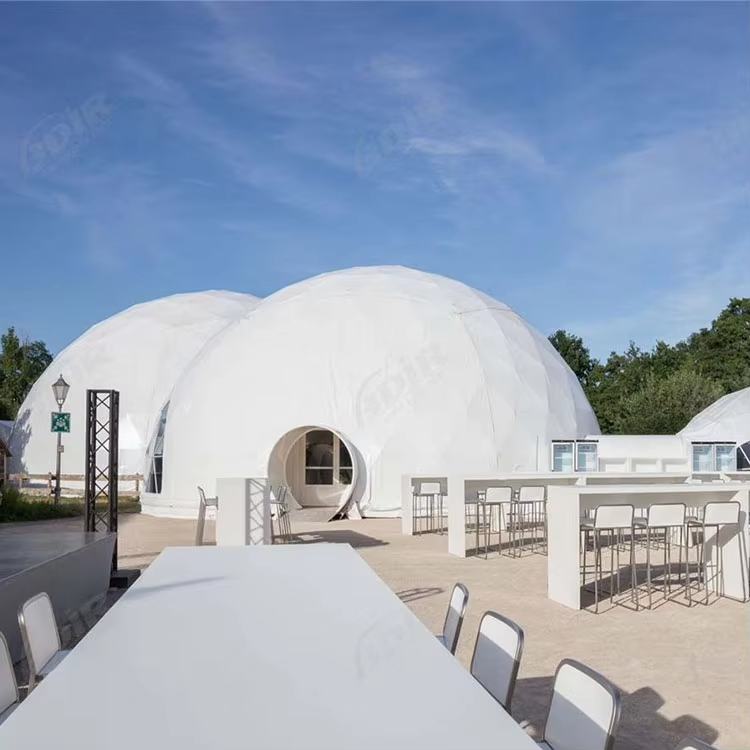

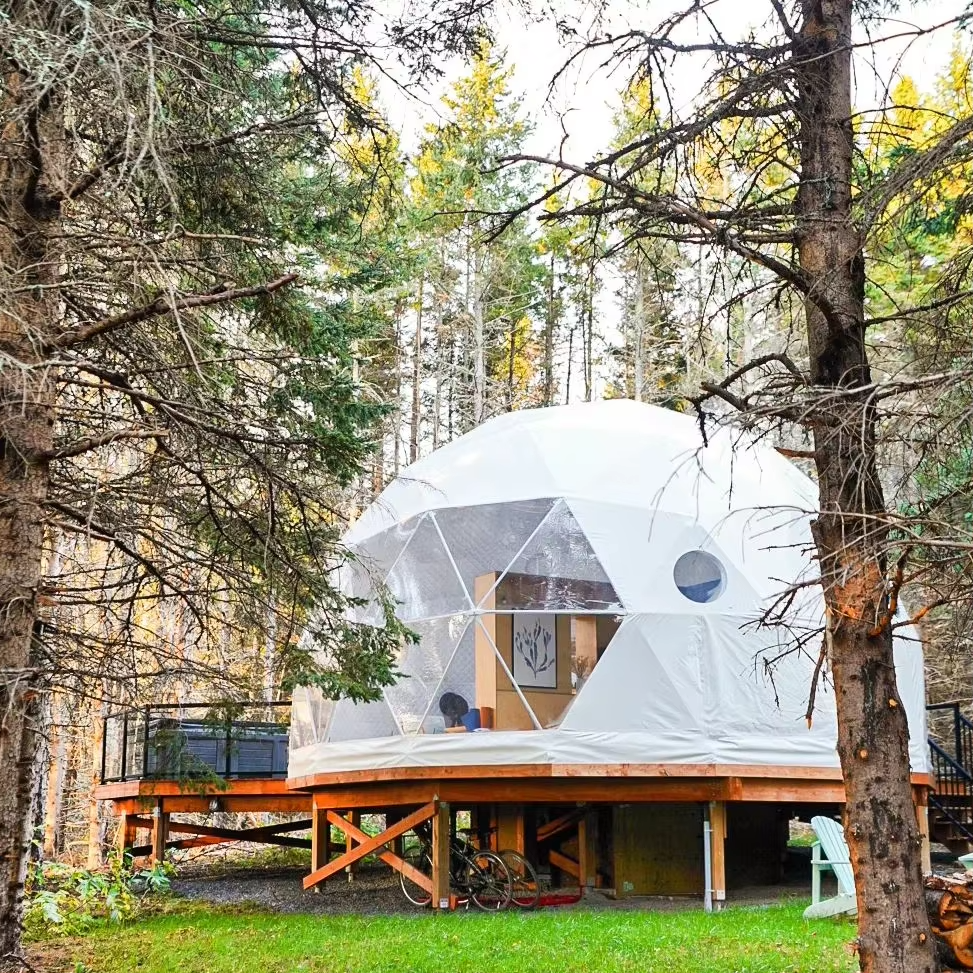

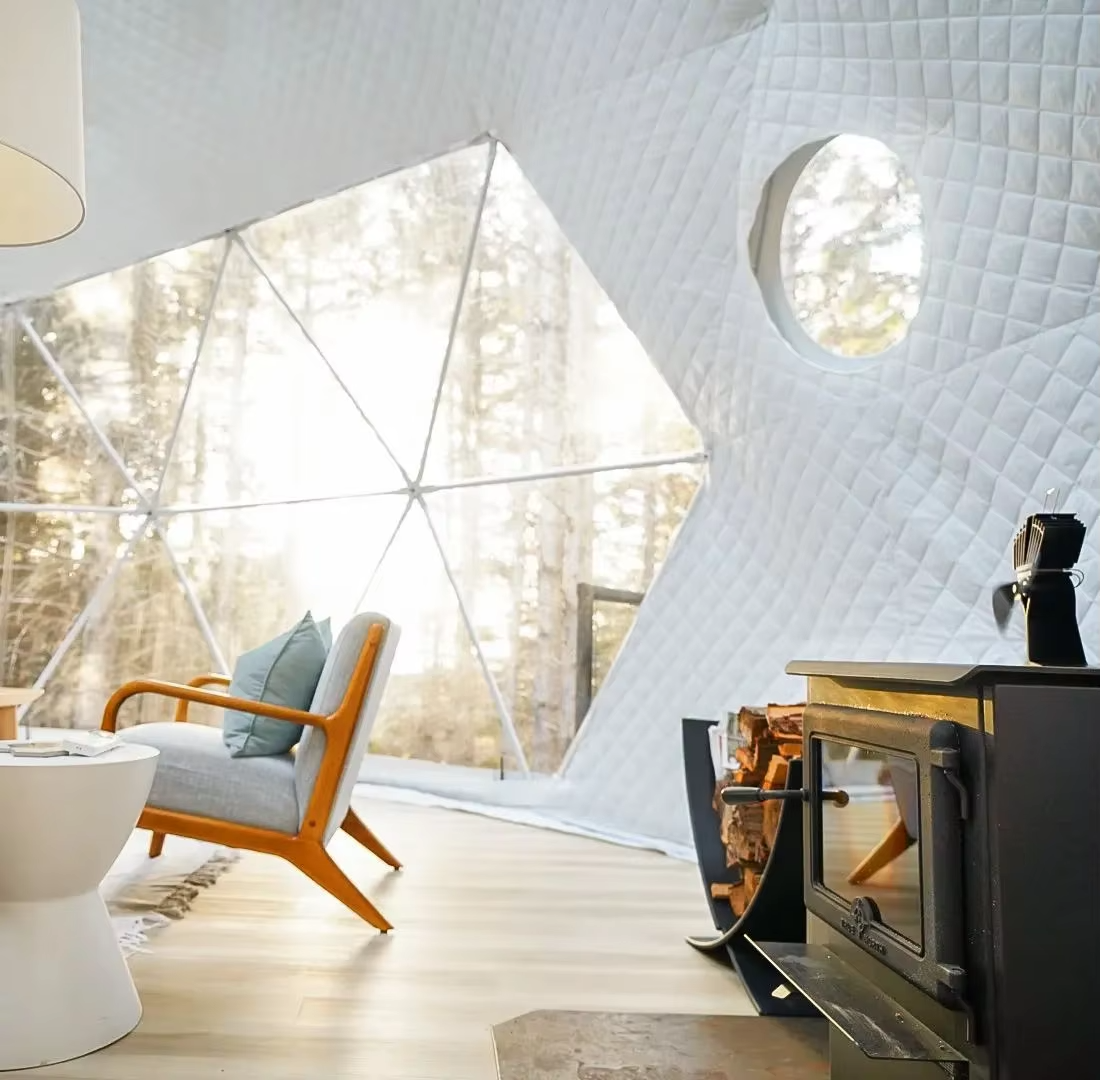


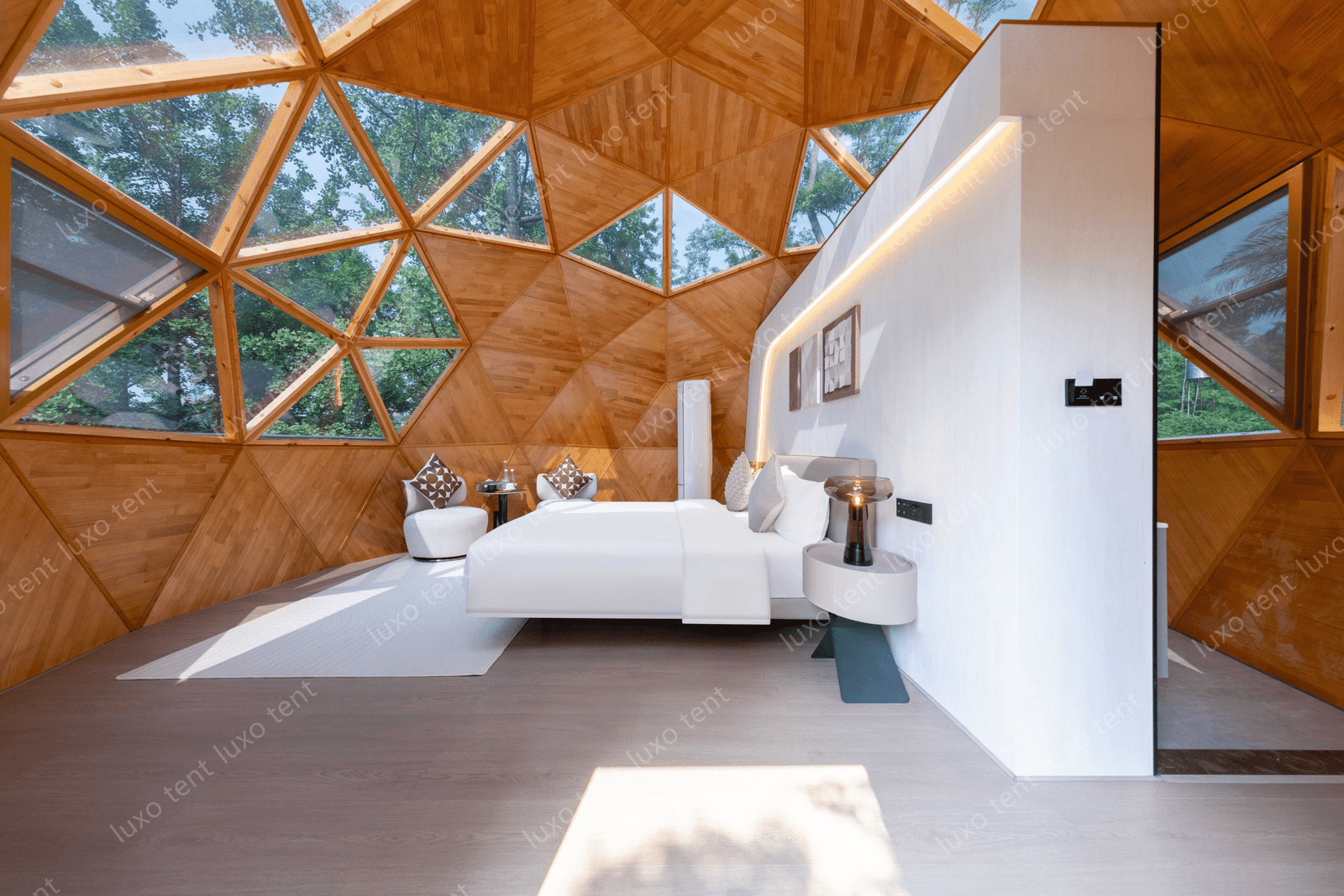
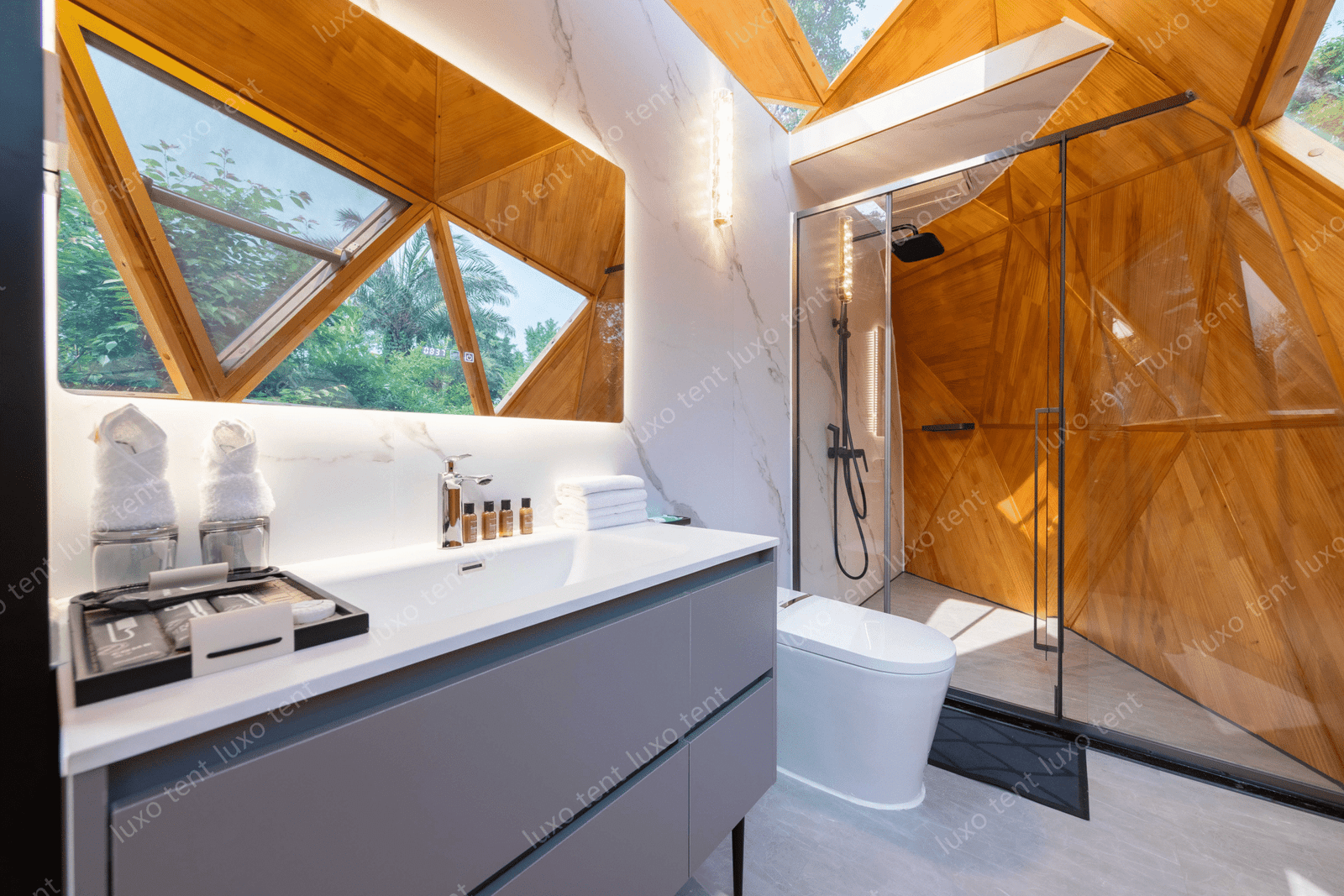

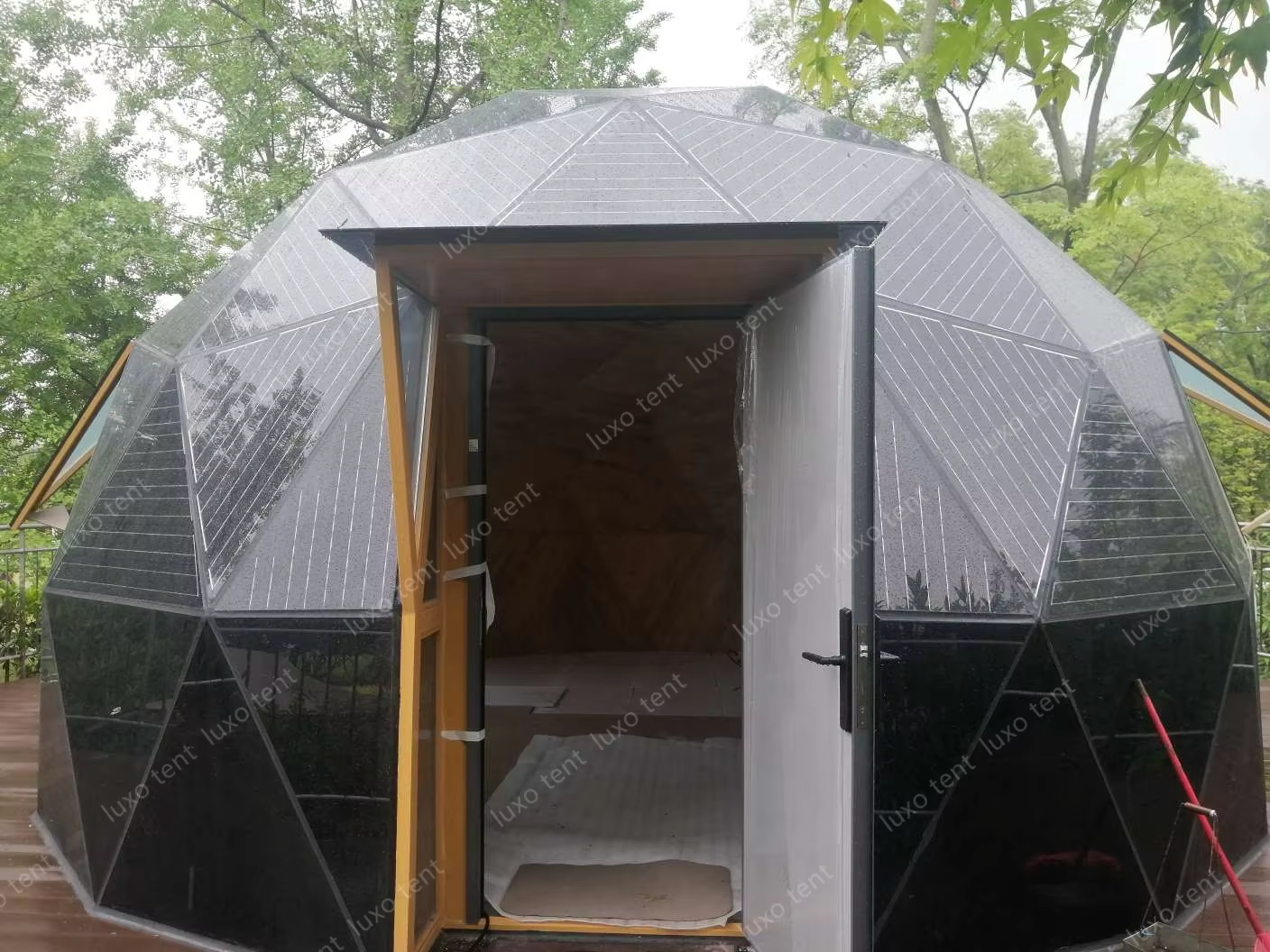

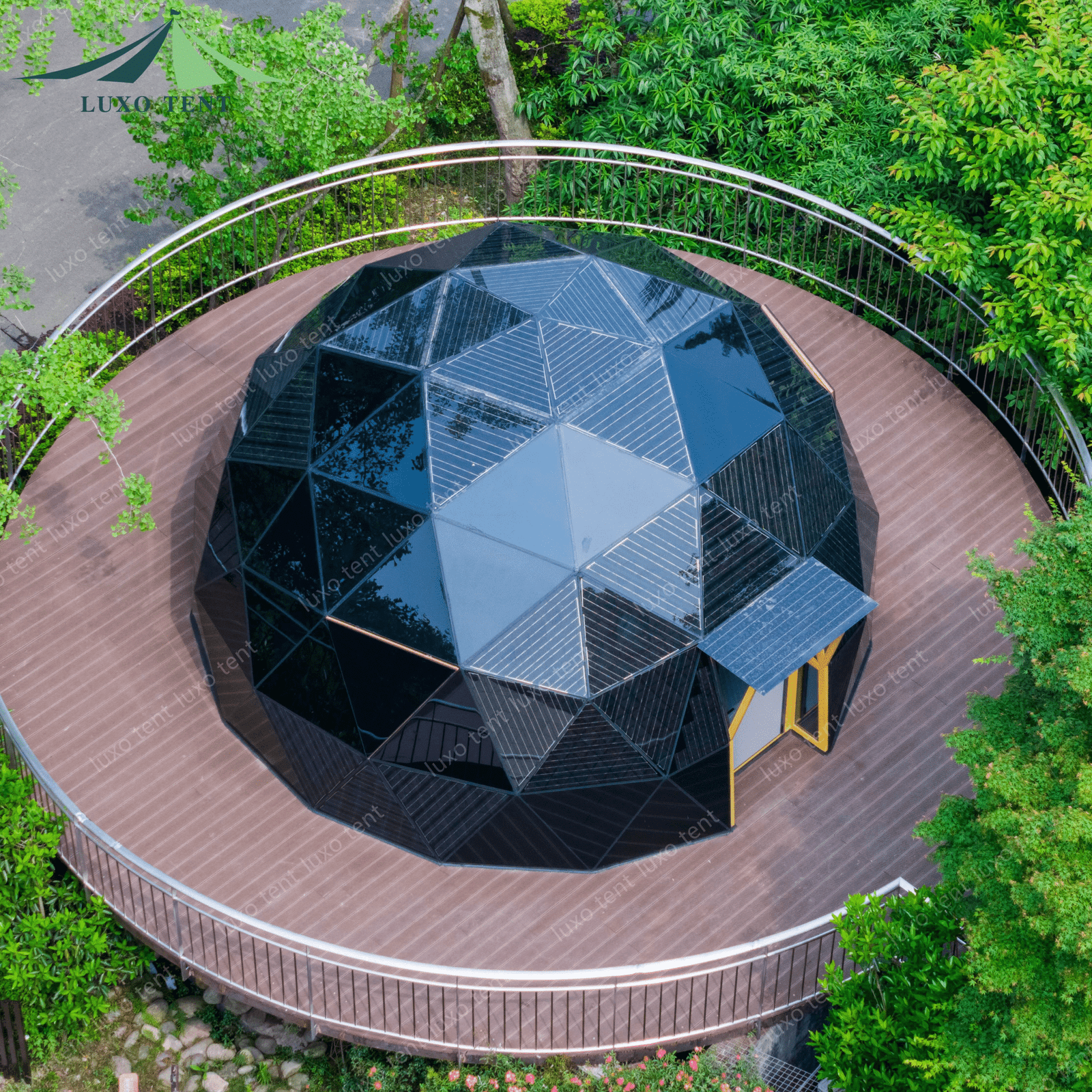




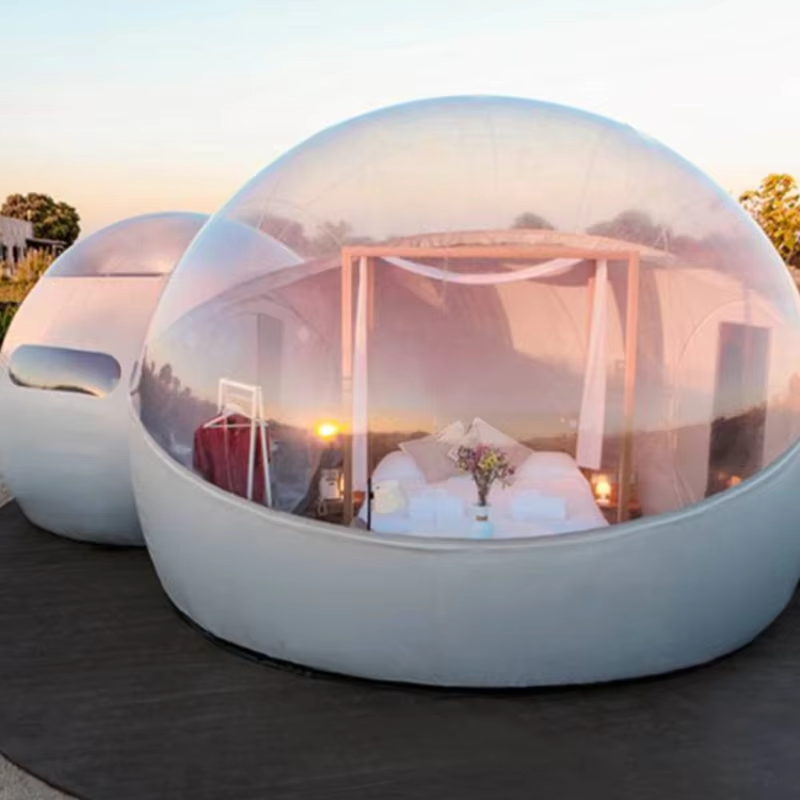

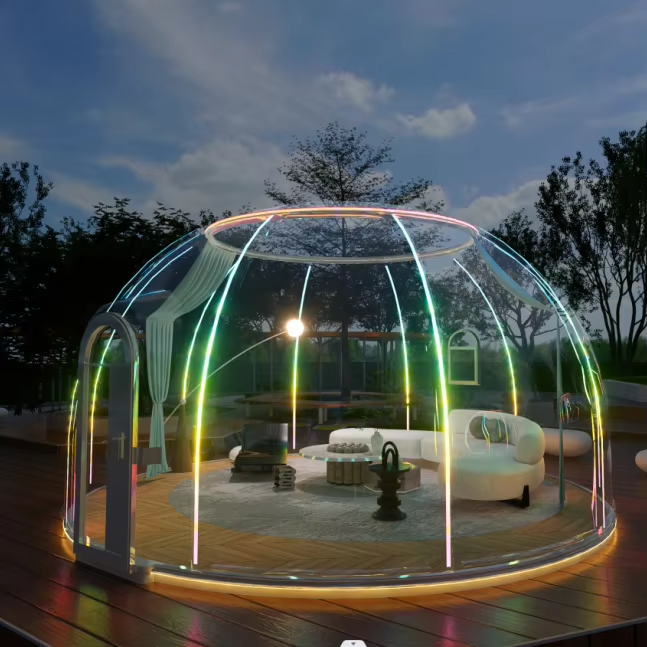





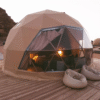








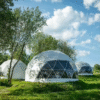








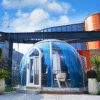


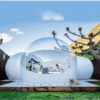



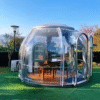
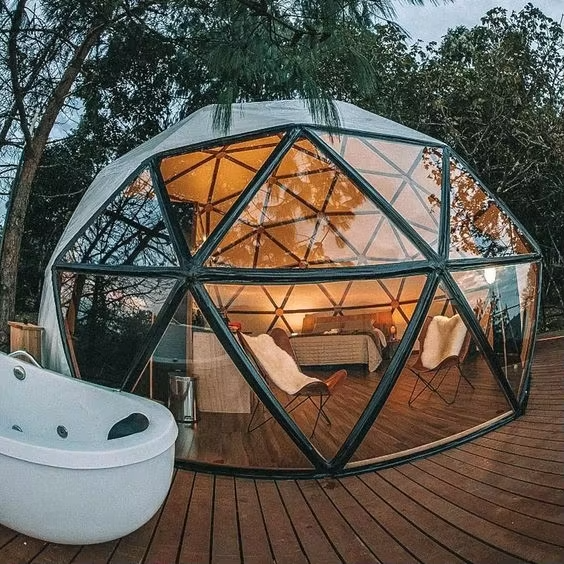
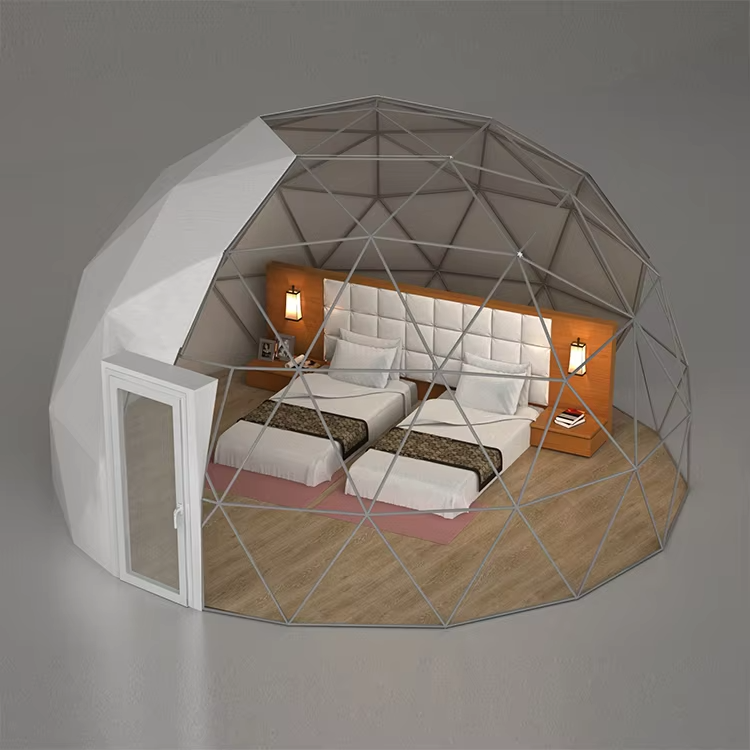

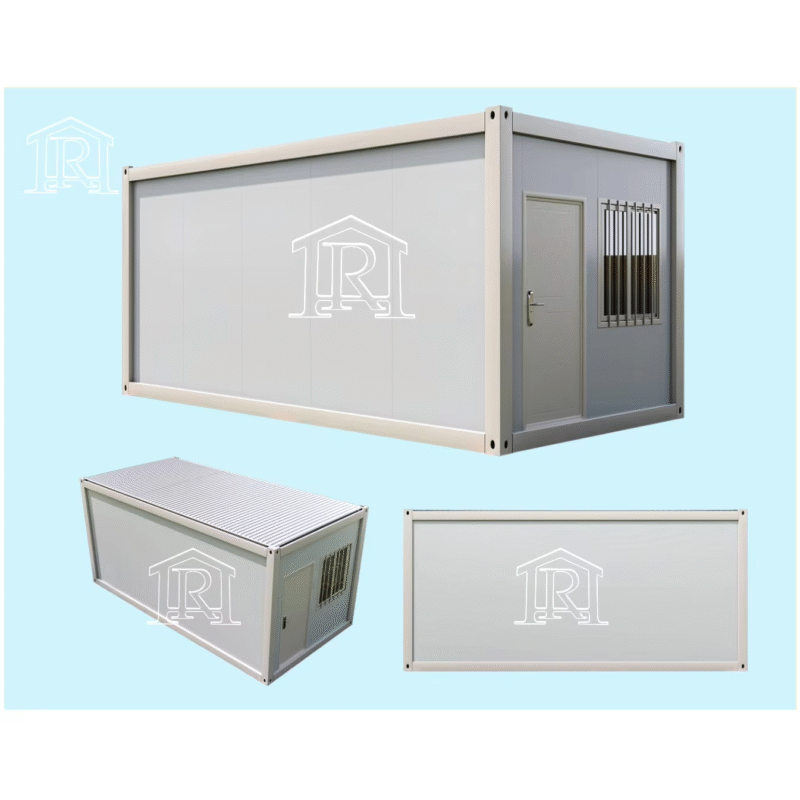
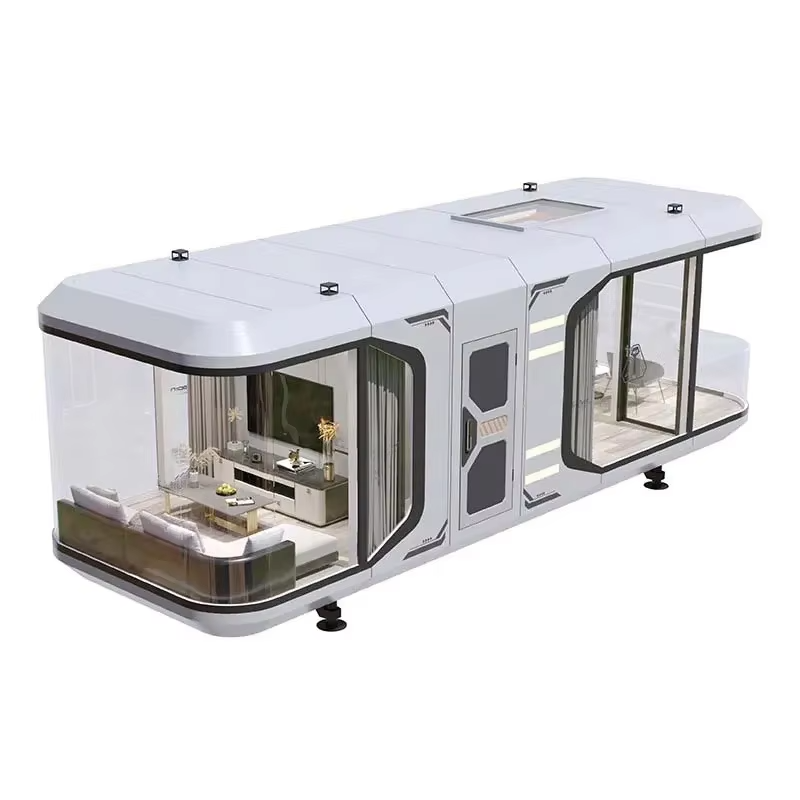
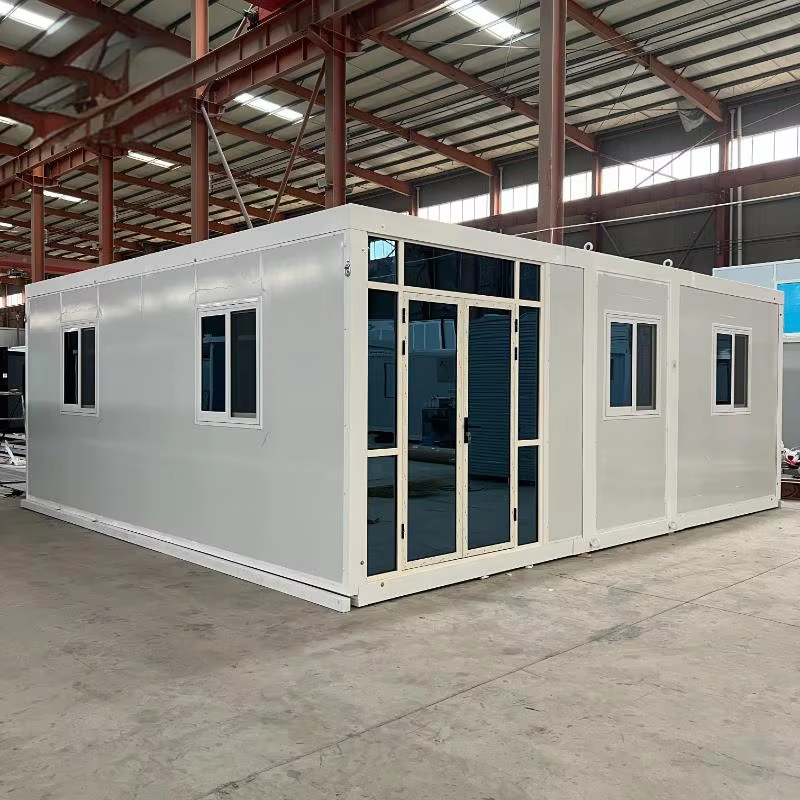
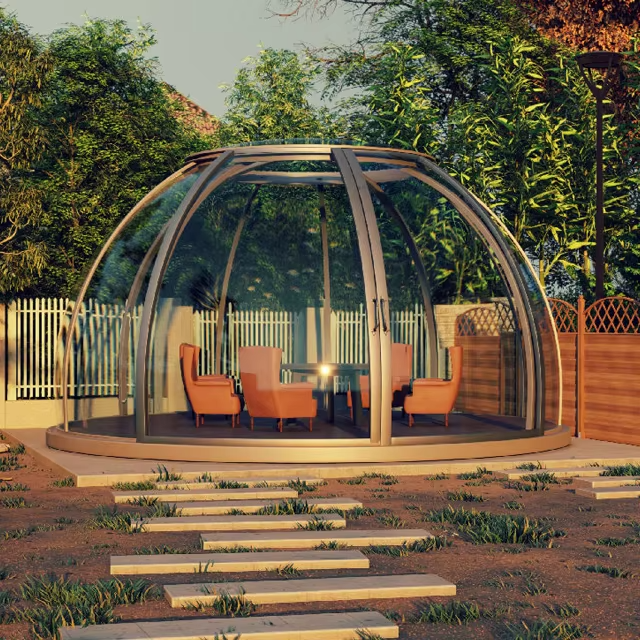

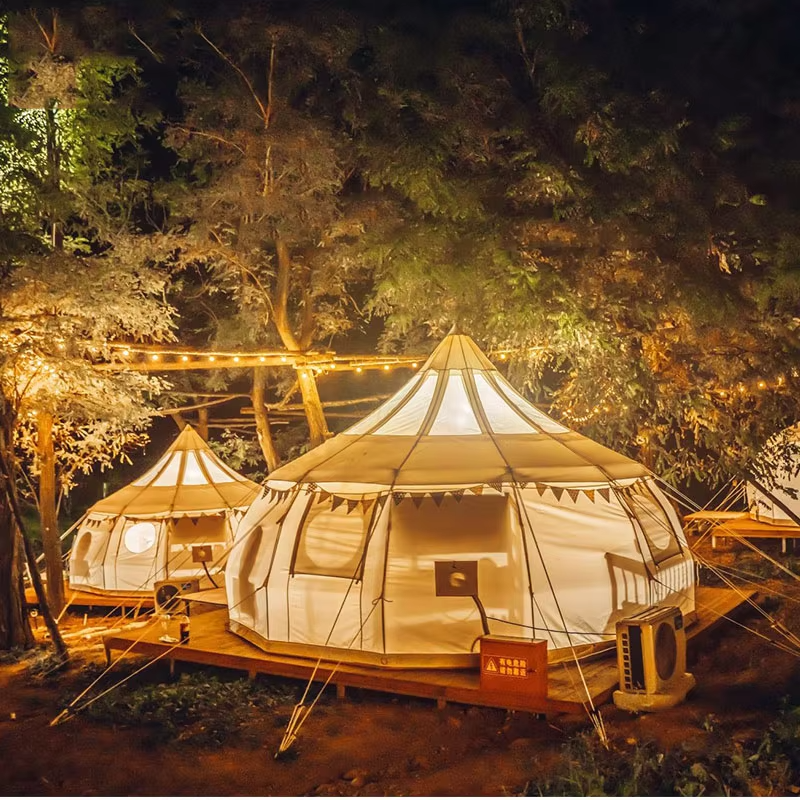
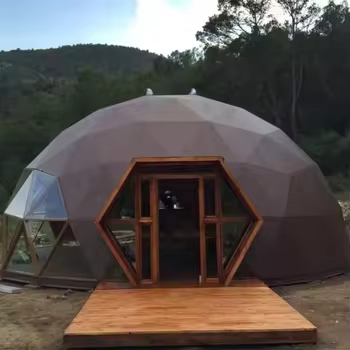
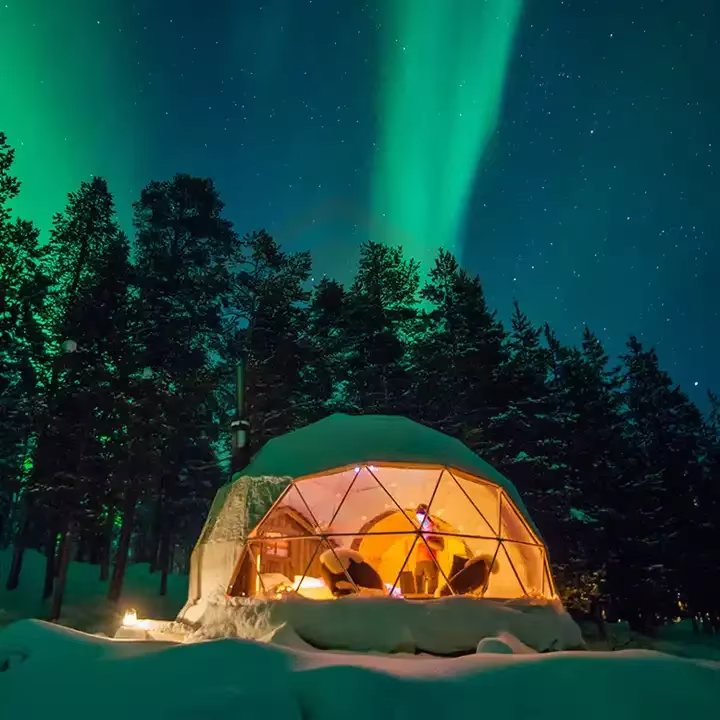

Reviews
There are no reviews yet.